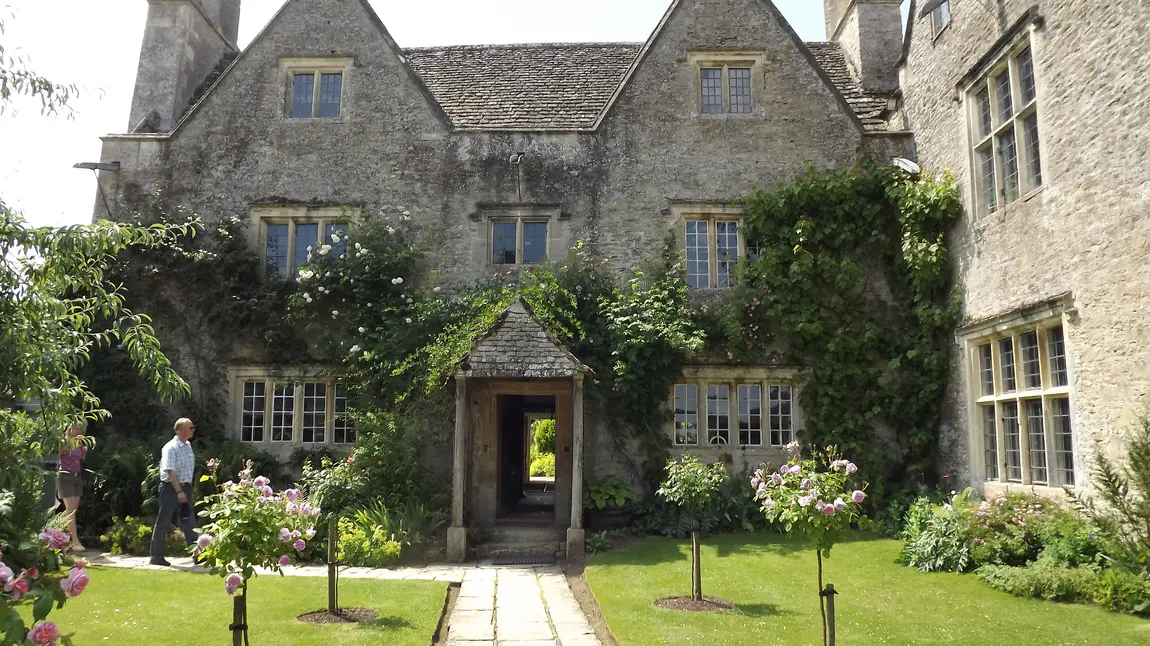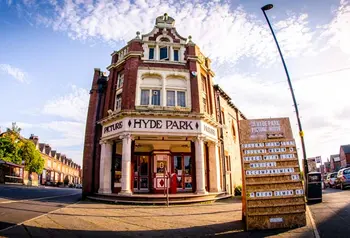£55m National Lottery boost for heritage

Today, HLF announces support worth more than £55million to 12 projects across England.
From gardens and galleries to wartime cinemas and the story of a city, today’s investment is set to secure some of the nation’s much-loved heritage, create employment and volunteer opportunities and boost tourism and local economies.
Heritage Minister Tracey Crouch said: "Our heritage provides us with a sense of identity and helps boost tourism, local economies and people's wellbeing. These grants will have a huge impact on a range of projects across England. I am delighted that, thanks to National Lottery players, we are able to help preserve important parts of our heritage for the public to enjoy."
Ros Kerslake. HLF Chief Executive said: “Whether sharing the source of William Morris’ inspiration, or saving a century of cinema and community heritage, the impact of National Lottery players’ money reaches far and wide. Today’s investment will boost tourism and local economies, secure some of our nation’s heritage for future generations to enjoy and provide some fantastic opportunities for volunteers and visitors of all ages.”
Kelmscott Manor, West Oxfordshire - £4.7m, including development funding of £334,800
Opening days and visitor numbers are set to double at Kelmscott Manor, William Morris’ family home in the Cotswolds.
Led by the Society of Antiquaries of London which owns the manor, the project will also ease pressure on the important site, the small village of Kelmscott and its residents.
Additional historic buildings will be brought back into use for visitors, reducing heavy footfall at existing facilities which will also be significantly improved. Access through the village and relocated parking areas will also be improved.
The Grade I listed Manor and its grounds are intrinsically linked with the story of the English designer, writer and social activist. Many of Morris’ works were inspired by the historic and natural environment of Kelmscott which helped shape his views on conservation. Morris once observed that the buildings looked as if they had ‘"grown up out of the soil".
Today, Kelmscott Manor is an incredible collection of listed buildings dating back to the 16th century, housing furniture, pictures and textiles, including many pieces created by Morris.
Two rooms in the manor currently closed to the public will be opened as exhibition and archive spaces, and six historic buildings in the grounds will be restored as a café, learning centre and activity space.
People of all ages will be able to enjoy the stories of Kelmscott and Morris, while new digital interpretation will allow virtual visitors to experience online tours, study objects up close and hear from a variety of Fellows of the Society and experts on William Morris, Kelmscott Manor and the Arts and Crafts Movement.
Hyde Park Picture House, Leeds - £2.4m, development funding of £122,000
Open for film lovers in Leeds for over a century, the UK’s only surviving gas-lit cinema will be saved for future generations to enjoy.
Hyde Park Picture House, also thought to be one of the oldest small picture houses, has gas ‘modesty’ lighting which was introduced to shake off the disreputable image of earlier 'penny gaffs' where audiences would sit in complete darkness.
Despite opening just after the outbreak of the First World War in 1914, the Grade II listed cinema became increasingly popular and played a key role in broadcasting news bulletins, war footage and morale-boosting patriotic dramas. It took the advent of the ‘talkies’ in its stride and remains popular today – showing historic films and modern blockbusters.
The project will open up archive material which includes film programmes dating back to the cinema's opening and even weather reports for every day until 1958.
Alongside the gas lighting, a number of original features will be restored during the project led by The Leeds Grand Theatre and Opera House Ltd, including the terrazzo foyer floors and decorative screen plasterwork. Facilities and access will be significantly improved and a new box office will bring queues out of the rain.
The project will ensure Hyde Park Picture House remains as a working historic cinema, creating jobs, training and volunteering opportunities at the heart of Leeds for another century to come.
From stories of Shackleton and saints to hope for historic hotels
The other awards being made as part of this latest round of investment are:
- £4.7m to explore the country’s polar, Pacific and maritime heritage in the new Endeavour Galleries at National Maritime Museum, within the Greenwich World Heritage Site
- £14.8m for a new Plymouth History Centre to bring five collections together and put heritage at the heart of the city
- £3.9m to transform access to St Albans Cathedral and retell the story of Britain’s first Christian saint
- £3.6m to remove St Mary Magdalene’s Church in Paddington from Historic England’s ‘At Risk’ register and explore the area’s extraordinary heritage
- £7.4m to help Royal Museums Greenwich save the Armada Portrait of Elizabeth I for the nation
Projects receiving initial support and development funding are:
- £2.8m (including development funding of £223,600) to secure the future of the Grade II* listed Hall for Cornwall in Truro, and collect 1,265 personal stories of its history – one for each seat in the auditorium
- £2m (including development funding of £163,300) to restore Otterburn Hall, Northumberland as a hotel, boosting the local economy and giving the historic building a sustainable future as accommodation for visitors to Northumberland
- £4.8m (including development funding of £212,000) to build on historic RHS Garden Wisley’s founding tradition as a learning garden and hub for horticulture and conservation
- £3.6m (including development funding of £678,800) to St Marylebone Parish Church in Westminster for conservation work and to tell the story of the area’s 900-year journey from ancient rural village to urban metropolis
- £604,400 (including development funding of £17,700) for The Beautiful Burial Ground project to uncover the natural, built and social heritage of burial grounds across England and Wales
Further information
- Rebecca Lamm, HLF press office, via tel: 020 7591 6027 or on email: Rebecca.Lamm@hlf.org.uk
- Katie Owen, HLF press office, via tel: 020 7591 6036 or on email: KatieO@hlf.org.uk
